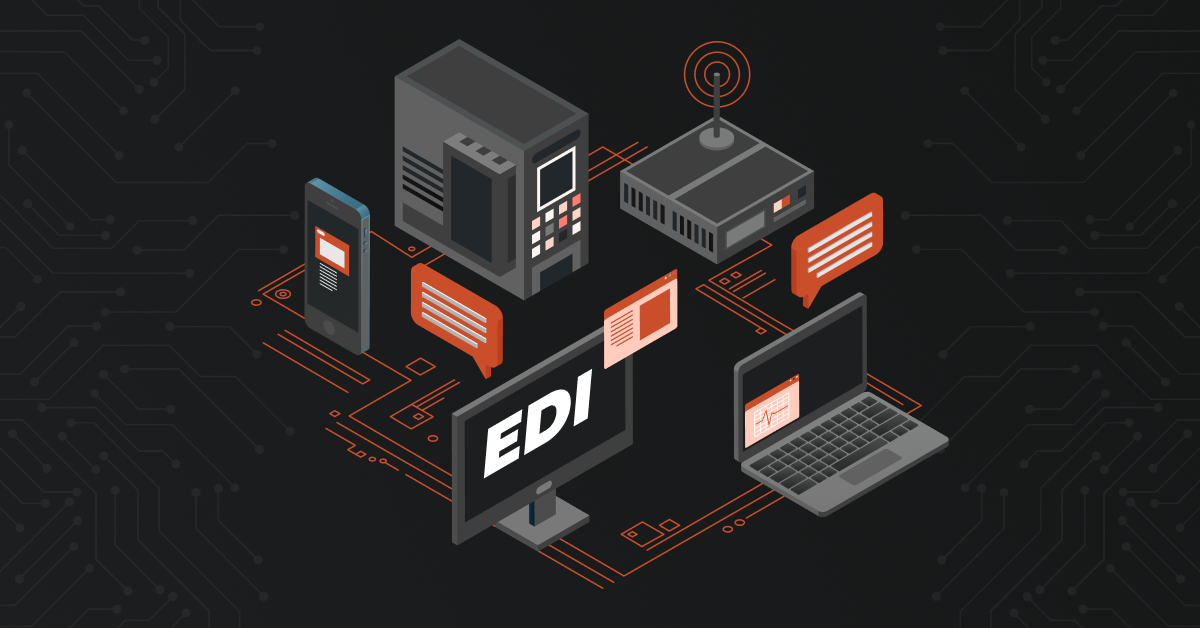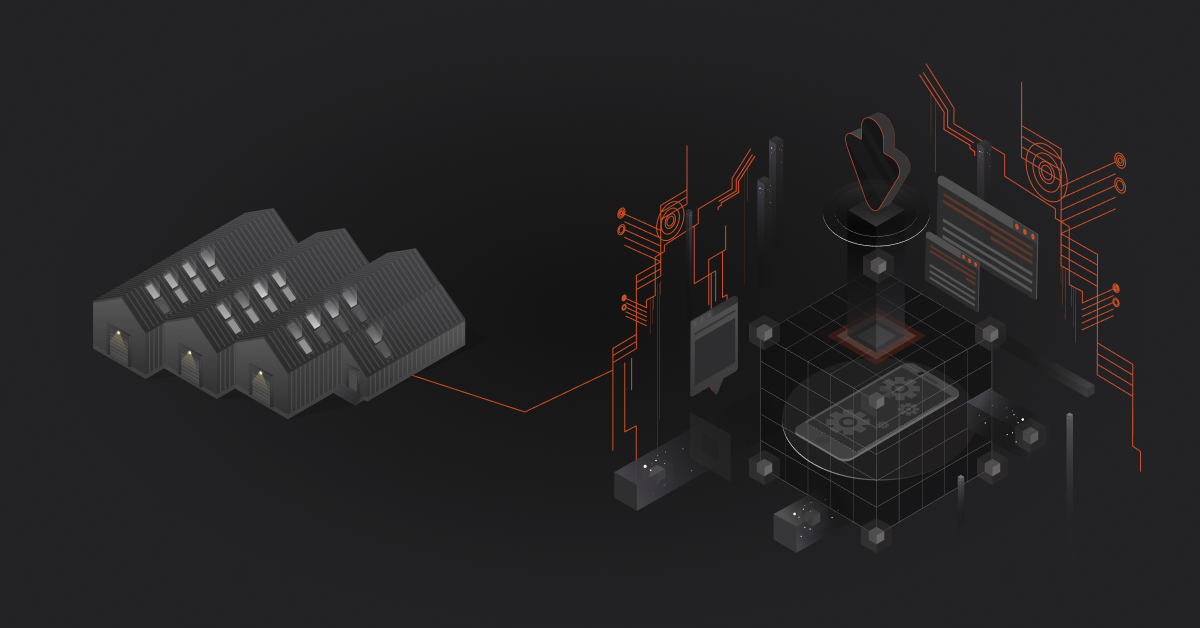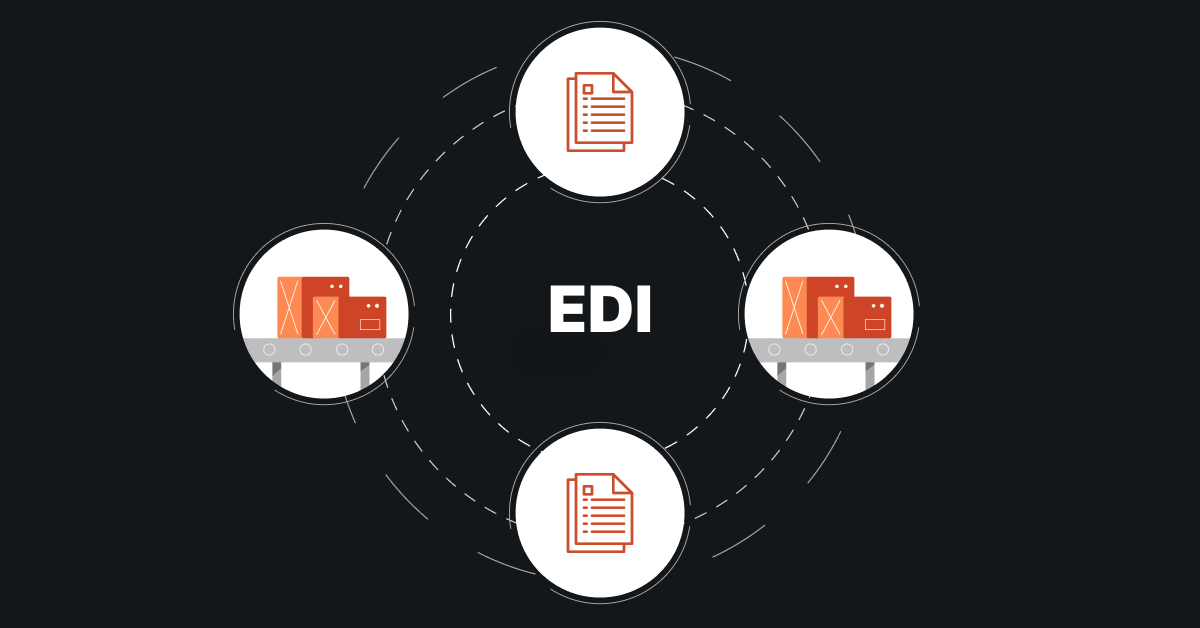Vendors with Amazon Vendor Central can exchange documents using various methods, including EDI, the Vendor Central portal, and the Vendor Central API (Application Programming Interface).
EDI stands out as the preferred choice for document exchange. The Vendor Central API is particularly beneficial for Direct Fulfillment Vendors, offering similar advantages and functionality to EDI.
Understanding Amazon EDI Integration
Amazon Vendor Central serves as a platform for manufacturers and wholesale distributors to directly sell their products to Amazon.
Here’s a breakdown of this model:
- Vendors provide products to Amazon, and Amazon handles listing, pricing, and fulfillment to end customers. The integration of Amazon Vendor Central with a seller’s business software system ensures seamless two-way communication.
- Relevant data is extracted from the seller’s system and sent to the Amazon marketplace, while information like sales orders is extracted from the store and integrated into the company’s internal system.
- This smooth exchange of business documents is facilitated by EDI (Electronic Data Interchange) in a standardized electronic format.
Amazon’s EDI enables the users to exchange various business documents, including purchase orders, invoices, shipment notices, and payment information between vendors and Amazon. This ensures a streamlined and efficient flow of information in the business partnership.
Also read: B2B EDI Integration Explained [+Top Solution for Distributors]
What Can be Exchanged Over EDI
Electronic Data Interchange (EDI) facilitates the exchange of the following business documents. Here’s a simplified overview of the process:
- Purchase Order (PO) Processing: The vendor’s EDI software receives the PO and automatically updates the vendor’s ERP system.
- Product Shipment: The vendor processes the PO and ships the products to Amazon.
- Advance Shipping Notice (ASN): The vendor sends an Advance Shipping Notice (ASN) to Amazon in EDI format, notifying Amazon of the shipment.
- Inventory Update: Amazon receives the ASN and updates its inventory system.
- Product Inspection and Payment: Upon receiving the shipment, Amazon inspects the products, processes the invoice, and makes payment to the vendor according to agreed-upon terms.
EDI acts as the efficient bridge enabling Amazon and its vendors to exchange information seamlessly. By automating document and data exchange, EDI plays a vital role in reducing manual labor, increasing productivity, and enhancing customer satisfaction throughout the supply chain operations.
How To Integrate Amazon Vendor Central
When integrating with Amazon Vendor Direct Fulfillment, you have two options within your vendor account. Amazon provides a unique Vendor code for registering and connecting your Vendor Direct Fulfillment account to internal systems. The choice then arises: EDI or API?
Amazon EDI Integration:
- Utilizes EDI to transmit XML messages for orders and acknowledgments.
- If you have an existing EDI process, it can be expanded for Vendor Direct Fulfillment Program.
- Developers may be needed if the message format and content differ from your current EDI setup.
Amazon API Integration:
- Introduced by Amazon in Q3 2020, this approach requires setting up an API connection.
- API (Application Programming Interface) serves as a standard integration method, akin to EDI, facilitating communication between applications.
- Unlike EDI linking two EDI systems, API is a web-based protocol enabling connection between different systems.
Opting for Amazon EDI Integration is often favored due to its extensive coverage of Vendor functionality, making it a versatile choice.
While API offers extra access tailored for Direct Fulfillment processes, the ultimate decision hinges on factors like system compatibility, setup time, costs, and overarching goals
Also read: 6 Best EDI Integration Tools [+Top Choice for Distributors]
What Happens When Your ERP Doesn’t Support EDI or API
Not all ERP systems are built for direct EDI or API integration. Some are older, others lack the right modules, and a few just weren’t designed for this level of connectivity. But that doesn’t mean you’re stuck. You still have options.
One common workaround is file-based integration. Instead of EDI or API, your ERP might support CSV or XML file exchanges. In that case, you can transfer data securely using SFTP (Secure File Transfer Protocol) or FTP (File Transfer Protocol). It’s not as seamless as real-time API integration, but it gets the job done.
What Should You Do?
- Check Your ERP’s Capabilities: Talk to your IT team. Find out what file formats and transfer methods your ERP supports. Does it handle CSV? XML? Can it send and receive files via SFTP? Knowing this will help you figure out the next steps.
- Use a Third-Party Integration Tool: If your ERP can’t do EDI or API, consider using middleware. These tools act as a bridge between your ERP and Amazon’s system, converting data into a compatible format.
- Consider Upgrading or Customizing: If your ERP is outdated and making integration difficult, it might be time to explore an upgrade or customization. Some businesses even switch to cloud-based ERPs that support modern integrations.
Even if your ERP can’t handle EDI or API, you still have ways to connect your systems. The key is understanding your ERP’s limitations and finding the right workaround.
Checklist: What You Need for Amazon EDI Integration
Amazon EDI requirements might seem a lot, but breaking it down into steps makes it manageable.
- Vendor Central Account Access: First, make sure you have an Amazon Vendor Central account. Then, request access to Amazon’s EDI Self-Service Startup by logging in and contacting the Amazon Administrator.
- Complete Amazon’s Survey: Amazon requires vendors to fill out a self-service survey before setting up EDI. This survey collects key details like:
- Product IDs and Measurement Codes: Choose how your products will be identified and measured.
- Sender/Receiver IDs: Amazon uses these to verify EDI documents.
- Item Information: You’ll need to provide details on stock status, pricing, and case quantities.
- Connection Type: Decide how you’ll connect to Amazon. Your options include AS2, Amazon-Hosted SFTP, or a Value-Added Network (VAN).
- Prepare the Required EDI Documents: Amazon uses specific EDI transaction sets to process orders, track shipments, and handle invoices. These include:
- EDI 850 (Purchase Order): Lists order details, shipping location, and methods.
- EDI 855 (Purchase Order Acknowledgment): Confirms whether you accept or modify an order.
- EDI 856 (Shipment Notice): Provides package IDs, tracking numbers, and shipping details.
- EDI 810 (Invoice): Includes pricing, payment terms, and billing details.
- EDI 846 (Inventory Report): Shares inventory levels and pricing.
- Additional Documents for Automation: To streamline your workflow, you may also need documents like purchase order change requests, product activity reports, and routing instruction requests.
To understand exactly in which order things work, follow the guidelines below.
Setting Up EDI Integration With Amazon
Here’s a step-by-step guide on how to set up EDI (Electronic Data Interchange) integration with Amazon Vendor Program:
- Choose an EDI Service Provider: Select an EDI service provider that suits your needs and budget.
- Map Your Data: Once your EDI connection is established, map your data to the Amazon Vendor Central format. Your chosen EDI provider likely has tools to assist with this mapping and translation process.
- Testing and Certification: Conduct testing with your EDI trading partner to ensure your connection works smoothly. Complete Amazon’s testing and certification process, which may involve sending and receiving test transactions.
- Go Live: After successful testing, go live with your EDI system.
- Integration with Your ERP (Enterprise Resource Planning) or Business Systems: Integrate your EDI solution with your ERP or business systems to automate the exchange of EDI documents with Amazon.
- EDI Document Exchange: Begin exchanging EDI Shipping documents (e.g., purchase orders, invoices, advanced ship notices) with Amazon as per their requirements.
- EDI Compliance and Ongoing Support: Maintain compliance with Amazon’s EDI requirements and keep your EDI solution up-to-date. Reach out to Amazon’s Vendor Central support or your EDI service provider for assistance with any difficulties or changes.
Setting up EDI with Amazon Vendor Central can be complex, so it’s advisable to work with an experienced EDI service provider who can guide you through the process and ensure a proper connection.
Benefits of Amazon EDI Integration
Here are the main reasons why you should consider Amazon EDI Integration:
Streamlining Communication
Facilitates seamless exchange of important business documents between business systems and Amazon Vendor Central EDI, enhancing communication efficiency.
Eliminating Paperwork
Simplifies the process of selling products in bulk by eliminating paperwork associated with order processing, invoicing, and payment settlements.
Bulk Inventory Handling
Provides clear visibility into real-time data and enables easy updating of bulk inventories, ensuring efficient management of product stocks.
Minimizing Errors
Reduces human error by eliminating hours of data entry and manual processing. Without the need for manual input, businesses save valuable time that would otherwise be spent correcting mistakes. This ensures smoother business operations and removes the worries of processing errors that could delay orders or cause miscommunication.
Quick Order Processing
Accelerates order processing on Amazon, ensuring order delivery and customer satisfaction in a timely manner, leading to positive reviews and improved SEO scores and Amazon performance ratings.
Efficient Wholesale Management
Enables wholesale sellers to efficiently manage multiple product listings, inventories, and payments for enhanced operational effectiveness.
Also read: Sage 100 EDI Integration Explained [+ Top 5 Solutions]
Best Practices for Successful Amazon EDI Integration
- Choose a Trusted EDI Provider: Select an EDI provider who has years of experience and a proven track record of successful integrations.
- Collaborate with Your EDI Provider: Work closely with your EDI provider to ensure your system aligns with Amazon’s EDI requirements.
- Integrate with Your Order Management System: Automate order reception and processing by integrating EDI with your Order Management System (ERP/CRM).
- Continuous Evaluation and Optimization: Regularly assess and optimize your EDI integration to meet evolving business needs and remain compliant with Amazon’s requirements.
Amazon EDI integration: Vendor Central vs Seller Central
Amazon Vendor Central
- Sells products directly to Amazon, which resells to customers on Amazon’s Marketplace (B2B).
- Companies act as Amazon’s suppliers, selling products directly to Amazon.
- Amazon handles selling, promoting, and delivering the products labeled as “Sold by Amazon.”
Amazon Vendor Central Features
- Requires an invitation from Amazon to access the platform.
- Offers standard payment terms.
- Provides less control over pricing and product promotion strategies.
Connectivity for Amazon Vendors
- Vendors can connect to Amazon Vendor Central using EDI or Amazon’s Selling Partner API (SP API) for managing inventory and sales tracking.
- Amazon supports two EDI message standards: EDIFACT and X12.
Amazon Seller Central
- Sells products directly to consumers (B2C).
- Allows companies to sell products to Amazon customers, providing more control over pricing.
- Companies can manage shipping and returns themselves or utilize Amazon’s services.
Amazon Seller Central Features
- Open to all companies.
- Offers reduced payment times.
- Provides full control over item promotion and product inventory.
- Enables achieving higher margins by controlling the selling price.
- Most brands utilize Seller Central.
Connectivity for Amazon Sellers
- Amazon sellers use Amazon’s SP-API for message transfer, facilitating real-time synchronization of product information like prices and stock.
Integrating both Amazon Vendor Central and Amazon Seller Central is crucial for businesses aiming to maximize their presence on the platform.
This synergy enables manufacturers and wholesalers to maintain control over their wide variety of product listings, pricing, and promotions, all while leveraging Amazon’s extensive customer reach and efficient fulfillment capabilities.
For this blog, we will be solely focusing on Amazon Vendor Central since Seller Central does not support EDI connectivity.
Top Amazon EDI Integration Solution for Manufacturers and Distributors – DCKAP Integrator
Integrating Amazon EDI with your backend systems is crucial to meet Amazon’s strict order fulfillment guidelines and avoid penalties for late or inaccurate data.
Try DCKAP Integrator:
- A simple cloud-based solution with pre-built connectors that simplifies the integration process. It offers near-instant benefits by reducing monthly spending and the overall timeline for automated solutions.
- A robust integration solution that facilitates seamless connectivity between your EDI system and backend ERP, ecommerce, and logistics systems.
- DCKAP handles integration upgrades, allowing businesses to focus on core operations.
- Straightforward, elegant, and intuitive interface that allows you to set up integration flows and implement business logic effortlessly.
DCKAP Integrator is an affordable solution for businesses of all sizes. Curious to see how it works? Book a free consultation today!
FAQS
What Is EDI in Amazon?
EDI (Electronic Data Interchange) in Amazon is the automated exchange of business documents between Amazon and its certified Amazon vendors. Instead of manual data entry, EDI enables seamless communication, ensuring the timeliness of order processing and reducing errors.
Amazon follows industry standards for EDI, but vendors must meet specific requirements to integrate successfully. The process involves setting up a secure connection, exchanging documents like purchase orders and invoices, and maintaining compliance with Amazon’s guidelines. While EDI can be a complex process, it streamlines operations and strengthens relationships with business partners by making order management more efficient.
What are the key features to look for in a new reliable EDI system?
Look for features like robust document handling, real-time synchronization, scalability, support for different EDI document types, and ease of integration with various platforms.
Why is Amazon Vendor Central considered a central platform for vendors?
Amazon Vendor Central acts as a central platform where vendors can manage and fulfill orders, handle inventory, and exchange documents electronically, creating a centralized hub for efficient operations.
What can and cannot be exchanged over EDI?
Electronic Data Interchange (EDI) facilitates the exchange of various business documents such as purchase orders, invoices, shipment notices, customer’s personal data and payment information between trading partners. It is a standardized electronic format for seamless document exchange.
How does Amazon EDI Integration contribute to customer service?
Amazon EDI Integration enhances customer service by automating order processing, reducing errors, and ensuring timely fulfillment. It enables a smoother customer experience through accurate and efficient document exchange.
What Information is Needed for the Vendor Central Survey?
The Vendor Central survey requires various information, including:
- Product IDs and Measurement Codes (e.g., ASIN, UPC, Vendor SKU).
- Measurement Units (e.g., EA, CA, UN).
- Sender/Receiver IDs with a Qualifier and an ID number.
- Item Information for testing (e.g., In-stock, Discontinued, Invalid, Backorder items).
- Connection type preference (AS2, Amazon-Hosted SFTP, VAN).
How to Conduct Testing Before Processing Actual Orders?
Before processing actual orders on Amazon Vendor Central, conduct tests using dummy documents provided by Amazon. Test scenarios include different item statuses (In-stock, Discontinued, Invalid, Backorder) along with associated details like Cost, Item Price, and Case Quantity. Ensure the identifiers match the data in your test system.
What are the Connection Options for Back-End Systems and Vendor Central?
Choose the type of connection between back-end systems and Amazon Vendor Central. Options include AS2, Amazon-Hosted SFTP, and a Value-Added Network (VAN). AS2 is recommended for being user-friendly, reliable, and cost-effective.
How much does Amazon Vendor integration with EDI cost?
The cost of Amazon Vendor integration with EDI varies based on your system’s complexity and the level of information exchange. Basic setups for downloading purchase orders in a simple ERP may cost 3 to 4 figures, while more sophisticated setups could range from 4 to 5 figures. Larger organizations with a global footprint might have budgets extending to 6 figures.
How long does Amazon Vendor integration with EDI take?
The integration timeline depends on factors such as the system, the extent of information exchange, and complexity. While integrating with Amazon itself is quick, setting up the interface with your ERP may take varying amounts of time, ranging from two weeks to three months, depending on organizational and marketplace factors.
Where should you start with Amazon Vendor integration?
- Start by assessing your operations and collaborating with administration and finance teams to identify key problems. Clearly define the issues you seek to address, outline steps, alternatives, and your ultimate goals. EDI integration streamlines business processes like downloading and accepting POs, creating ASNs, and generating invoices.
- Determine your urgency, budget, and timeframe. Assess whether this is a necessity or a nice-to-have project and establish a timeline. Consider your readiness for off-the-shelf integration providers versus customized solutions. Research and watch demos of different service providers to align solutions with your business needs.
Is it possible to set up Amazon Vendor integration on your own?
While you may not necessarily require a software partner for EDI setup, you should have knowledge of handling EDI messages within your internal systems, including accepting and exporting messages from your ERP system. An IT team can be recruited to set up the integration if you prefer a more hands-on approach.
What is Amazon Web Services (AWS)?
Amazon Web Services (AWS) is a comprehensive cloud computing platform provided by Amazon. It offers a wide array of services, including computing power, storage, databases, machine learning, analytics, security, and more, allowing businesses to build and scale applications effectively.
Contents




